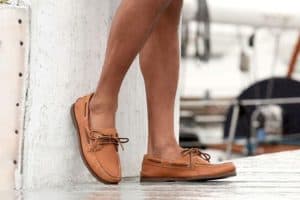One of the most important things to learn as a boater is how to pass fishing boats. So, how should you pass a fishing boat?
To safely pass a fishing boat, you should steer your boat to the starboard side or the right side of the boat. In other words, the two boats should be passing each other on their port sides or their left-hand sides.
In passing the fishing boat, you should also slow down your boat. This is important, especially if the size of your boat is considerably bigger or smaller than the other boat. It is just a simple courtesy so a large wake will not throw the smaller vessel.
Read on to learn more about passing a fishing boat, the proper way of doing it, the rules that govern it, and why it’s important to do it the right way.
How Should You Pass a Fishing Boat?

To pass a fishing boat safely, you need to steer to the starboard side or the right-hand side of the boat. So, both boats should be passing each other on their port sides or their left-hand sides.
If you are the one passing the other boat, you should slow down. Slowing down is important when passing especially if there’s a big difference in the sizes of the boats. This is just a simple courtesy to avoid a wake being thrown on the smaller boat.
You should also take early action in keeping well clear of the boat that you want to pass. Begin changing your course and slowing down your boat early on. Pass at a safe distance to the right or starboard side of the other boat or the left or port side of your boat. The safest route you can take in passing a boat is its starboard side.
Importance of Correctly Passing a Fishing Boat
With so many millions of registered recreational boats in the US, there is always an increased risk of accidents. So, while boating truly provides a wonderful time on the water, you should understand that there are rules in boating and on how to pass a fishing boat.
Every boater should follow a general rule to give the other boats ample space in the water and not cross over their wakes. It’s more important to follow this fundamental rule if there are fishing boats around.
This is what you are expected to do, just like what you are expected to do in road traffic. You can’t drive your car on the road without knowing the traffic rules. Not knowing the traffic rules is the perfect recipe for a road accident. You are not just endangering yourself but also the other motorists.
It’s the same with the waterways in the US, and for that matter, in all countries across the planet. You can’t just decide on your own wherever you want to go and whatever you want to do with your boat on the water.
So, to prevent accidents and loss of lives, federal laws regulate and govern the use of all types of boats whenever they are navigating bodies of water in the United States. Included in these Federal laws are rules on how to pass a fishing boat.
Boating Etiquette of Passing Fishing Boats
It is simply boat etiquette. Even more than other sports, boating has etiquette. Etiquette is defined as “the customary code of polite behavior among members of a particular profession or group.” The etiquette in boating is not only concerned about social norms. It is also focused on safety.
This etiquette defines whether a boat should go left or right in specific situations. It says that a boat should always be steered on a channel or river’s right side or starboard. Every boat changes its direction or course to the right (starboard) and passes to the left (port).
In this regard, a boat approaching from your right side (starboard) always has the right of way. Every boat skipper should assume that this arrangement or requirement always exists.
The custom or practice of boats always passing on the right probably came about because most sailors are right-handed. Their steering oars were placed on or over the right side of the stern or the rear or back part of the boat.
Sailors started calling the right side of the boat its steering side. Later on, the term was changed to ‘starboard’ when they combined two old English words, namely ‘steor’ or steer and ‘bord’ or the side of the boat.
You should be aware that fishing boats often use ropes, large nets, and fishing lines. The quantity of these fishing accessories depends on the size of the boat. Several of these fishing lines can extend over hundreds of feet through the water.
If your boat crosses on any of these lines, it could cause terrible accidents. It can cause damage to both your boat and the other boat.
Right of Way Hierarchy for Boats
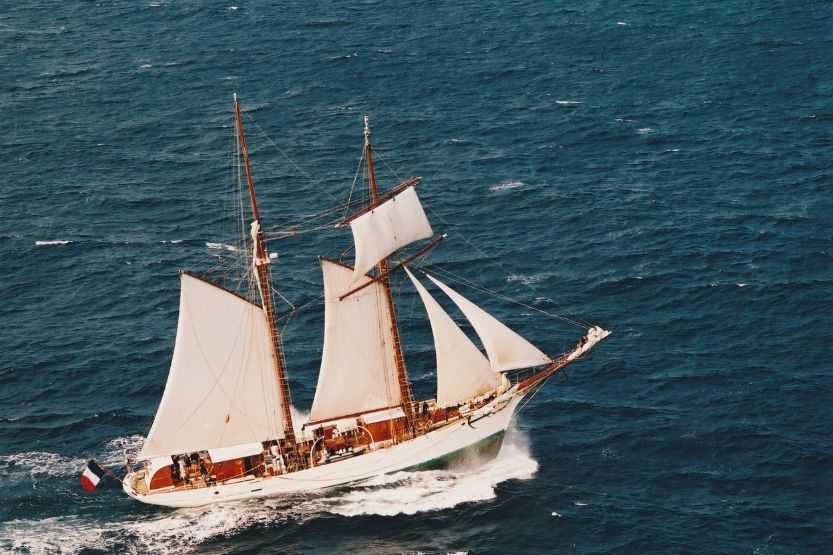
Like our roadways, there is also a right of way hierarchy on our waterways. The point of it all is that all boaters should do everything in their capacity to prevent crashes and collisions with other vessels, including fishing boats.
Regarding the right of way hierarchy, the greatest priority is given to the boat overtaken by another or crewless vessel. Besides this, the passing priority from the highest to the lowest is as follows:
- A boat that is being passed or crossed by another boat
- Unmanned vessels
- Vessels with limited maneuverability because their gears such as fishing nets are in the water
- Vessels with restricted or limited navigation
- Fishing boats that are actively engaged
- Sailboats
- Powered boats
As you can see, fishing boats have the right of way. It is a higher priority over other vessels, including sailboats and powerboats. That is why boaters should wait for the ‘all clear’ signals from fishing boats before passing them. However, if the fishing boat is only trolling and not actively engaged, its priority is equal to a powerboat.
Rules Regarding Passing a Fishing Boat
Fishing boats commonly use fishing nets and fishing lines. These boats can’t go to any spot in the water that they like. They are limited to specific lines on waterways and are not allowed to cross over those lines. Other boats are not allowed to cross those lines unless they have sent signals and agreed with the fishing boat captain.
There are certain rules when it comes to passing fishing boats. These rules depend on the position of the boats concerned and other circumstances. The navigation rules of the US Coast Guard should be followed in this regard.
Passing Vessel Should Steer to the Right-hand Side
According to these rules, the passing vessel should steer to the right-hand side when passing a boat. In this way, both boats will be passing each other on their left-hand or port sides. The rules also say that a vessel should pass a fishing boat with a minimum wake and avoid its fishing lines.
Signal the Captain
In addition, these rules also state that before a vessel could pass a fishing boat, it should first signal the captain and receive an acknowledgment before they pass. There are two possible ways to signal the skipper of the fishing boat:
- If the passing vessel is on the right side of the fishing boat, it should use one blast to pass
- If the passing vessel is on the left side of the fishing boat, it should use two blasts to pass
Maintain Full Concentration and Have a Proper Lookout
While the vessel is passing, it should maintain full concentration and have a proper lookout. This is to avoid any unforeseen obstacles that may appear on the water while it is passing. The passing vessel should also have some of its passengers lookout for swimmers or oncoming boats or other water bodies to give timely warning to the captain.
However, the highest priority is to avoid a collision. So, the captain should use all their common sense to prevent any collision that will endanger the passengers of both vessels. If this kind of danger could be avoided by passing the boat on a different side, that should be done.
So, it is essential for the captain of the passing vessel not to stick to the rules if it puts the passengers of both boats in danger.
Again, how should you pass a fishing boat? To pass a fishing boat, steer your boat to the right-hand or the starboard side. This way, your boat, and the other boat will pass each other on the left-hand or port side.
Protocols for Passing a Fishing Boat
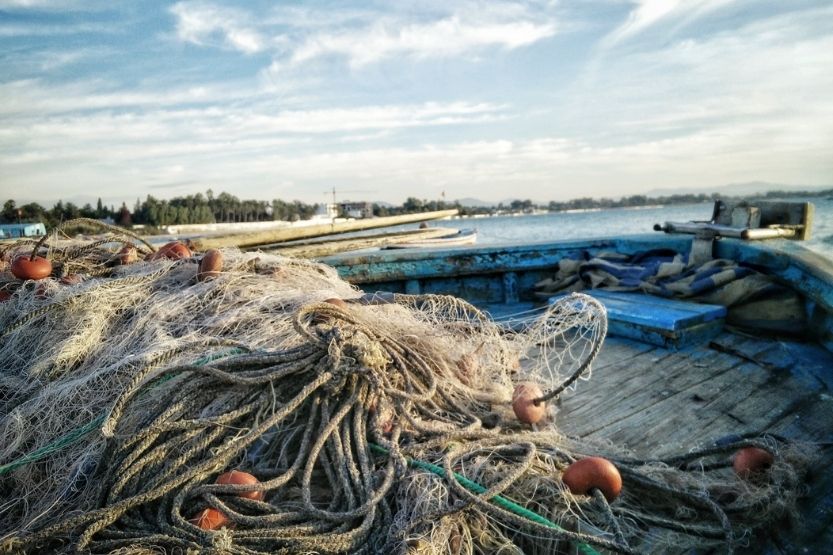
The US Coast Guard issued several protocols for the safe crossing of certain lines on the water. These protocols aim to teach boaters how to pass another vessel, including fishing boats. In this regard, here are the general concepts that govern this activity:
Protocols in Passing a Vessel
- Whenever two vessels are approaching each other, one of the vessels takes the ‘give way’ and the other vessel takes the ‘stand on.’
- The ‘give way’ vessel is that one that needs to yield to the ‘stand on’ vessel so that they will not collide with each other.
- The ‘stand on’ vessel is the one that is trying to pass.
- The two vessels need to give their signal if they intend to stop or move.
- Both vessels have the inherent responsibility to avoid accidents and from colliding with each other.
Steps for Passing a Fishing Boat
The above protocols are to be strictly followed when passing a fishing boat. With these protocols in mind, here are the steps that you can use to pass a fishing boat safely:
1. Reduce Speed
As the passing boat approaches the fishing boat, its skipper should reduce the speed of the boat. Slowing down will enable the captain to maneuver the boat to have enough safe distance from the fishing boat. This will ensure that the vessel will not collide with the fishing boat.
2. Wait for the “All-Clear” Signal
This step is both a courtesy to the other boater and a safety measure at the same time. The passing boat must wait for the ‘give way’ boat to signal that it is clear to pass. Blasting their horns is the common way boaters signal or communicate with each other.
3. Pass on Port
For road traffic in the United States, when drivers want to overtake a vehicle, they must pass it on its left side. This is so that the car’s driver being overtaken can have an unobstructed view of the overtaking car.
It is the same with boats on the water.
As per the US Coast Guard rules, the passing boat should always do it on the other boat’s port (left side). So, the skipper of the passing boat should steer toward starboard. In this manner, both boats are passing each other on their port or left sides.
When the passing boat is ready to pass, its captain should honk or blast its horn once. The fishing boat, when it is ready to be passed, should also honk its horn once.
But when the fishing boat has fishing lines cast from its port side toward the shore, it might not be possible to pass it on that side. So, the passing boat should take the part of the ‘stand on’ boat instead of the ‘give way’ boat.
To do this, the captain of the passing boat should give a signal to the other boat that it is passing the other boat on its starboard side. Then the captain should wait for the all-clear signal before they attempt to pass.
If all is clear, the captain of the passing boat should blast or honk their horn twice. When the other boat honks twice as well, the passing boat is clear to pass.
4. Pass Slowly
The last safety precaution in passing a fishing boat is to do it slowly. Pass very slowly and try very hard not to make wakes. Making a large wake is very dangerous to any fishing boat. If a large wake is produced by the passing boat, many fishing gears and passengers in the fishing boat could be tossed overboard.
Conclusion: How To Pass a Fishing Boat
To pass a fishing boat safely, you must steer your boat to the other boat’s starboard side or its right side. This means both your boat and the other boat should pass on their port sides or left-hand sites.
Some protocols should be observed by the captains of the passing boat and the fishing boat. They need to follow these protocols to prevent their vessels from colliding with each other.

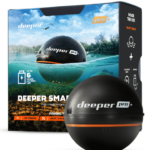
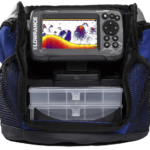
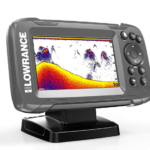

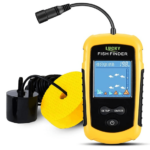

![Read more about the article Sit-In vs Sit-On Kayak [Difference Between Sit-On-Top vs Sit-In Kayaks]](https://boatinggeeks.com/wp-content/uploads/2021/07/sit-in-vs-sit-on-kayak-300x200.jpg)

